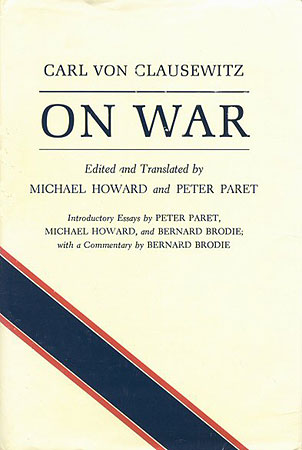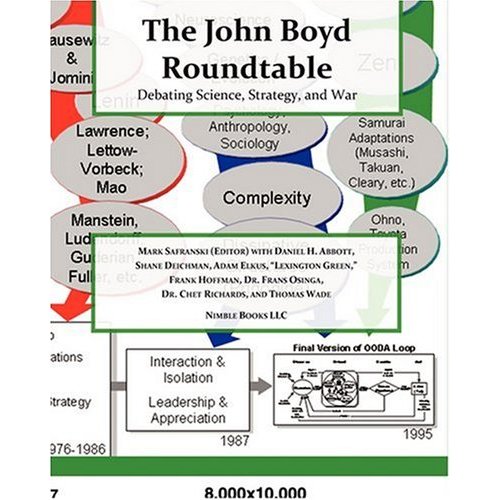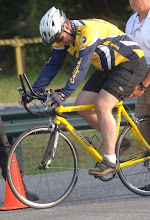Local friend
Citizen Netmom has been tagged by
LissaKay to provide a "Christmas Meme" profile, so I'm following her lead. Here are the rules:
1.
Link to the person that tagged you, and post the rules on your blog.
2. Share Christmas facts about yourself.
3. Tag seven random people at the end of your post, and include links to their blogs.
4. Let each person know that they have been tagged by leaving a comment on their blog.
Welcome to the Christmas edition of "Getting to Know Your Friends."
1. Wrapping or
gift bags?
Gift bags - the ultimate convenience in gift-giving!
2. Real or artificial tree?
Artificial pre-lit. (See comment on "convenience" in 1. above.)
3. When do you put up the tree?
Me? Never. My bride? Usually just after Thanksgiving.
4. When do you take the tree down?
After our annual Epiphany Party in early January.
5. Do you like egg nog?
Not as much as what you can put *in* the eggnog.
6. Favorite gift received as a child?
A BMX bike when I was 12 years old.
7. Do you have a nativity scene?
Yes (a small porcelain one).
8. Worst Christmas gift you ever received?
At an office "gag gift exchange", I ended up with a plastic hand pedestal that was supposed to be a remote control holder. We kept it in the closet until the follow year's gift exchange.
9. Mail or email Christmas cards?
Despite my comments on "convenience" above, this is one area where we go all out -- mail is the only way for us. Our family photo is planned months in advance (
this year's card was from a February trip to Mexico, complete with Santa hats in the luggage), cards are ordered shortly after Halloween, and labels printed the week before Thanksgiving. We have made a habit (perhaps bordering on Obsessive-Compulsive :-) of mailing them the day before Thanksgiving -- sort of a green flag for friends and family of the start of the holiday season.
10. Favorite Christmas Movie?
Tim Burton's The Nightmare Before Christmas.
11. When do you start shopping for
Christmas?
Black Friday. My lovely bride, however, starts the day *after* Christmas for the next year.
12. Favorite thing to eat at
Christmas?
My bride's crockpot turkey (never dry!). And my Grandmother's & Aunt Peggy's Secret Toffee.
13. Clear lights or colored on the tree?
Clear.
14.
Favorite Christmas song(s)?
Sarajevo 12/24 by Trans-Siberian Orchestra.
15. Travel at
Christmas or stay home?
We usually travel -- we have family and friends scattered throughout the country.
16. Can you name all of Santa’s reindeer?
Yes (though it might take me a while). Don't forget Olive! (As in "Olive, the other reindeer..." :-)
17. Angel on the tree top or a star?
Angel.
18. Open the presents Christmas Eve or
Christmas Morning?
One selected gift on Christmas Eve, the rest on Christmas morning.
19. Most annoying thing about this time of year?
Some people let themselves get too stressed out -- so courtesy seems to be too rare this time of year, ESPECIALLY on the roads and parking lots.
20. Do you decorate your tree in any specific theme or color?
Classic white lights, gold trimmed ribbon, with lots of sentimental-value ornaments.
21. What do you leave for Santa?
Milk and cookies, of course. And some carrots on the lawn for his reindeer.
22. Least favorite holiday song?
Anything with "singing" animals.
23. Favorite ornament?
Our Macy's-New York City "Curious George" ornament (showing George climbing the Empire State Building in a clear glass globe) from their 75th Anniversary Parade.
24. Family tradition?
Besides what's already been described here (decorations, cards, gifts), we have an emerging tradition of performances. Both kids play in holiday piano recitals, and Renee always performs with the church choir in their Christmas performances. Also, Shelby has performed in The Nutcracker three of the past four years now -- and Jarrett has said he wants to be a "party boy / mouse soldier" in next year's Nutcracker.
25. Ever been to Midnight Mass or late-night
Christmas Eve services?
Yes, a couple times (once in San Diego, when my mother-in-law visited us there; and another time in Minnesota at her church).
I will be passing this "tag" on to the following blogfriends (
updated to link to their replies):
ZenPundittdaxpSean MeadeCrittSoobA.E.ShlokCan't wait to see what they post... Merry Christmas to all!
Labels: birthday, culture, humor, religion, soob, tdaxp, toys, travel, zenpundit























